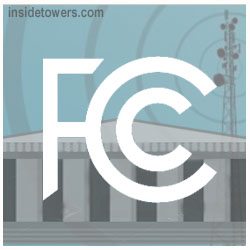UPDATE The Wireless Infrastructure Association applauded the FCC’s vote Wednesday to carve out a portion of the 900 MHz band for wireless use. Currently, the band is designated for narrowband land mobile radio communications and primarily used by land transportation, utility, manufacturing, and petrochemical companies. Inside Towers reported the action was expected today. The Commission voted 5-0 to make six megahertz of low-band spectrum available for the development of critical wireless broadband technologies and services.
WIA President/CEO Jonathan Adelstein said, “Realigning 900 MHz is important for 5G deployment and investment in wireless infrastructure, which will provide access to innovative wireless services at a time when the nation is demanding them more than ever.”
The remaining four megahertz of the 900 MHz band would still be licensed for narrowband operations.
Specifically, the Commission approved orders to realign the band and establish a transition mechanism based primarily on negotiations between prospective broadband licensees and existing narrowband incumbent licensees. The Commission is partially lifting the 900 MHz application freeze to allow existing licensees to file applications to move their narrowband operations.
The item establishes rules to prevent broadband applicants from receiving windfalls. It also includes application requirements and operating and technical rules appropriate for the new 900 MHz broadband licenses.
The Enterprise Wireless Alliance (EWA) also applauded the action. EWA President Mark Crosby said, “We appreciate the Commission’s action, for it evidences their realization that business enterprises and critical infrastructure entities are a fundamental component of our country’s wireless ecosystem and, like the mission critical and consumer sectors, deserve access to spectrum capable of providing broadband solutions unique to their industrial tasks.”
FCC Commissioner Geoffrey Starks said, “Broadband systems in the 900 MHz band will allow utilities to develop LTE networks to perform real-time monitoring and active control of their energy distribution systems. Smart Grid systems will smooth out spikes in usage before they happen, respond instantaneously to outages, and route power to customers in the most efficient manner, reducing consumption and emissions.”
His colleague, FCC Commissioner Michael O’Rielly said: “By using market forces to combine frequencies and reconfigure the band, we will be able to provide a 3-by-3 megahertz broadband license, while ensuring that there is adequate spectrum for incumbents and those that still seek smaller slivers of spectrum. In sum, we are opening a broadband license in the heart of the 900 MHz band, which should allow for and even expand innovative uses precluded by today’s choppy band segmentation.”
He believes restructuring the band through private sector negotiations, “is the best and preferable path,” and should ensure that incumbents are protected, relocated, or compensated if they reduce their offerings or no longer want to provide service. “However, to the extent that agreements cannot be reached with the last remaining incumbents, they can be relocated if provided with comparable facilities, which essentially means retuning and purchasing new equipment at the broadband licensee’s cost.”
Utilities, the largest and most complex systems in the band, are exempt from mandatory relocation, if the incumbent determines it cannot or does not want to move, according to O’Rielly. He calls this a common-sense approach. “Many of these systems are used to secure our power grids, meet other critical infrastructure communication needs, and are very difficult and expensive to relocate.”





Reader Interactions